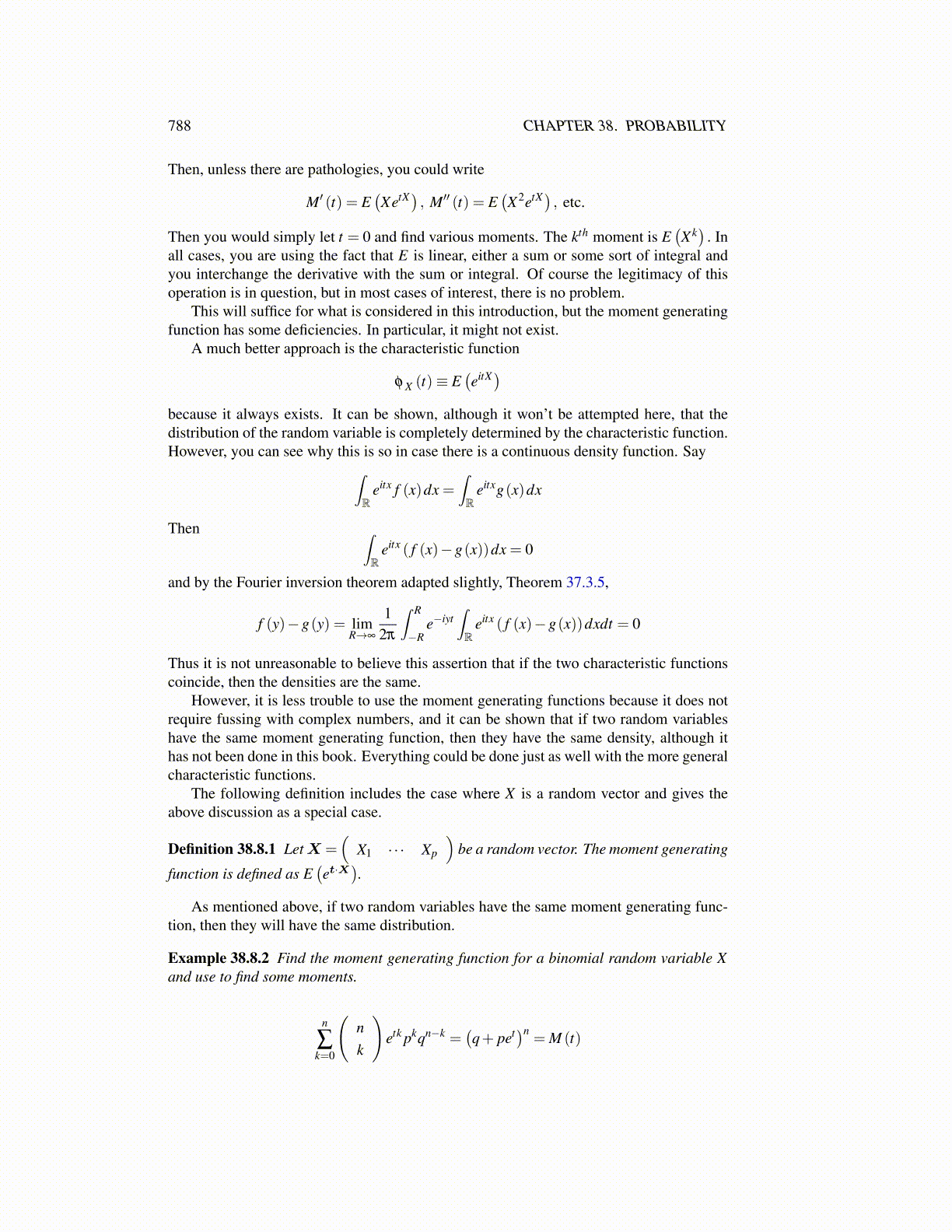
788 CHAPTER 38. PROBABILITY
Then, unless there are pathologies, you could write
M′ (t) = E(XetX) , M′′ (t) = E
(X2etX) , etc.
Then you would simply let t = 0 and find various moments. The kth moment is E(Xk). In
all cases, you are using the fact that E is linear, either a sum or some sort of integral andyou interchange the derivative with the sum or integral. Of course the legitimacy of thisoperation is in question, but in most cases of interest, there is no problem.
This will suffice for what is considered in this introduction, but the moment generatingfunction has some deficiencies. In particular, it might not exist.
A much better approach is the characteristic function
φ X (t)≡ E(eitX)
because it always exists. It can be shown, although it won’t be attempted here, that thedistribution of the random variable is completely determined by the characteristic function.However, you can see why this is so in case there is a continuous density function. Say∫
Reitx f (x)dx =
∫R
eitxg(x)dx
Then ∫R
eitx ( f (x)−g(x))dx = 0
and by the Fourier inversion theorem adapted slightly, Theorem 37.3.5,
f (y)−g(y) = limR→∞
12π
∫ R
−Re−iyt
∫R
eitx ( f (x)−g(x))dxdt = 0
Thus it is not unreasonable to believe this assertion that if the two characteristic functionscoincide, then the densities are the same.
However, it is less trouble to use the moment generating functions because it does notrequire fussing with complex numbers, and it can be shown that if two random variableshave the same moment generating function, then they have the same density, although ithas not been done in this book. Everything could be done just as well with the more generalcharacteristic functions.
The following definition includes the case where X is a random vector and gives theabove discussion as a special case.
Definition 38.8.1 Let X =(
X1 · · · Xp
)be a random vector. The moment generating
function is defined as E(et·X
).
As mentioned above, if two random variables have the same moment generating func-tion, then they will have the same distribution.
Example 38.8.2 Find the moment generating function for a binomial random variable Xand use to find some moments.
n
∑k=0
(nk
)etk pkqn−k =
(q+ pet)n
= M (t)